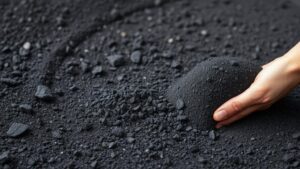How the Volcanic Deposits in the Cookes Range Produced Silver Ores
Introduction
The Cookes Range, located in southwestern New Mexico, is known for its unique volcanic deposits, which have significantly contributed to the regions silver ore production. Understanding the geological processes that led to these deposits offers insights into both the mineral wealth of the area and the broader implications for mining practices and economic development.
Geological Background
The Cookes Range is primarily composed of volcanic rock, shaped by extensive geological processes over millions of years. The area features a variety of volcanic deposits, primarily andesite and rhyolite, which have created an environment conducive to mineralization. formation of these rocks is attributed to volcanic activity during specific geological periods, particularly during the late Miocene.
Volcanic Processes
Volcanic activity plays a critical role in the formation of mineral deposits. In the Cookes Range, processes such as pyroclastic flows, ash deposition, and lava flows have resulted in the accumulation of minerals. As magma rises, it can transport and concentrate metals, such as silver, through hydrothermal solutions that circulate through rock layers.
Mineralization and Silver Formation
Mineralization refers to the processes through which minerals are deposited in geological formations. In the Cookes Range, hydrothermal fluids rich in silver and other metals migrated through fractures in volcanic rocks, depositing silver ores such as native silver, argentite, and other silver-bearing minerals. Statistical data indicates that the Cookes Range has produced over 50 million ounces of silver since mining operations began in the late 19th century, underscoring the significance of these deposits.
Types of Silver Ores Found
The volcanic deposits in the Cookes Range have given rise to a variety of silver ores. The following are the most notable:
- Native Silver: This is the pure form of silver, often found in quartz veins within the volcanic rock formations.
- Argentite: A silver sulfide mineral that forms in low-temperature hydrothermal veins, prevalent in the Cookes Range.
- Chlorargyrite: Also known as horn silver, this is a secondary mineral that results from the alteration of primary silver ore deposits.
Historical Context and Economic Impact
The silver mining history of the Cookes Range dates back to the late 1800s. Initial discoveries were made in 1881, leading to the establishment of several mining operations. The economic impact of these mines has been profound, not only providing jobs but also contributing significantly to local and state economies.
Mining Techniques
Mining operations in the Cookes Range initially utilized standard methods such as underground mining, but over time have evolved to incorporate more advanced techniques, including:
- Open-Pit Mining: This technique allows for the extraction of minerals from the surface, accommodating larger operations.
- Heap Leaching: A method for extracting silver from lower-grade ores, which involves piling crushed ore and applying chemical solutions.
Environmental Considerations
While silver mining in the Cookes Range has economic benefits, it also raises environmental concerns. The processes involved in mineral extraction can lead to significant land disturbance, water contamination, and habitat destruction. Responsible mining practices are essential to mitigate these impacts.
Future Prospects
Looking ahead, the potential for silver extraction from volcanic deposits in the Cookes Range remains significant. Given the growing demand for silver in various industries, including electronics and renewable energy, renewed exploration and investment in the region may lead to sustainable mining initiatives.
Conclusion
The volcanic deposits in the Cookes Range serve as an essential source of silver ores, formed through complex geothermal processes. The historical and economic impact of these deposits is profound, contributing to regional development while presenting environmental challenges. As technology advances and demands for silver rise, the Cookes Range remains a pivotal area for future mineral exploration and sustainable mining practices.
